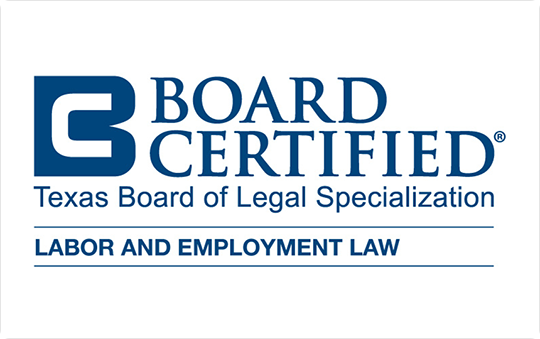Halfway Isn’t There
Do you plan a car trip to Dallas from San Antonio and then only drive halfway? No, you go the distance as planned. The same is true for your estate plan. Make a complete plan, which means the proper and complete coordination of your non-probate assets.
Your Best Estate Plan
Your non-probate assets must align with your estate plan. You set out to achieve the best estate plan for your current station in life. This requires consideration of your goals and objectives for your assets and property when you die. Your goals and objectives may include support for your surviving spouse and children, specific distributions to specific persons or charities, tax exposure limitations, protection from creditors, and probate avoidance to name a few. Your best results are achieved through coordinating your beneficiary designations for your non-probate assets and property with your goals and objectives for your estate plan. You don’t stop half-way through your plan.
Non-probate Assets
Proper planning requires you to consider and account for your non-probate assets. You must make the necessary beneficiary designations and routinely monitor those designations. Monitoring ensures your assets and property go to your current intended beneficiary. This is vital to your best estate plan. You should recognize all non-probate assets and direct their distribution upon your death.
The following questions and answers will set you on course for your best estate plan.
What are non-probate assets? Non-probate assets are those assets and property interests you own having their own means of distribution. This distribution occurs based on an underlying contract rather than your will. Distribution occurs when you die. Everything else are probate assets.
What are some examples of non-probate assets? Non-probate assets exist in many forms. The key is whether you can designate the asset or property’s beneficiary upon your death. Non-probate assets include life insurance, annuities, retirement plans, property owned by a trust, banking accounts with rights of survivorship or pay on death (POD) designations, and other titled assets/property held as joint tenant with rights of survivorship. Also, there are new statutory methods to transfer certain titled properties, such as vehicles (beneficiary designation for motor vehicle) and homes (transfer on death deed), without passing through a will.
How does ownership of non-probate assets transfer at death without probate? It depends. You may make certain transfers before death. You may transfer an asset or property by gift. When you make a gift to someone, ownership transfers at the time of the gift. Another transfer before death is by trust. When you use a trust, the transfer is complete when you retitle the asset or property in the name of the trustee for the trust. Then, when you die the trust agreement, and not your will, governs the assets distributions because the assets are owned by the trustee in a fiduciary capacity.
Other assets and properties are transferable at death. How and to whom depends on the financial institution’s rules and your beneficiary designation. Distribution of retirement accounts and life insurance policies, as well as other assets held at financial institutions, are determined by how you complete their “beneficiary designation form.” On the form, you designate your primary and secondary beneficiaries. The beneficiary designation form contains the financial institutions or insurance company’s rules regarding how funds will be distributed upon your death. By completing the form, you effectively remove the assets or property from your will and eliminate the need for probating the assets. Balances remaining in “pay on death” (POD) or joint tenancy with rights of survivorship accounts belong to the surviving party at your death. No other action is necessary on survivorship accounts. Survivorship accounts must state that the account vests in and belongs to the survivor upon the death of the joint account holder. Account designations such as “JT Ten” or “Joint Tenancy” are ineffective for survivorship rights. POD accounts are paid upon request by a party to the account.
Can non-probate assets be paid to the estate? You may choose to designate your estate as your beneficiary. This means a non-probate asset becomes part of your probate estate. It is up to the executor to distribute the property according to your will. This could be a wrong turn. The assets become reachable by your estate’s creditors for the payment of your debts. And the assets must pass through the probate process. Also, when beneficiary designations are blank or not current, the probate estate becomes the default recipient of assets. For example, if a retirement account owner fails to designate a beneficiary, the underlying contract will govern how the assets are distributed and most times the distribution is to the estate.
Complete Your Plan
Non-probate tools and traditional estate planning tools, such as wills, are not mutually exclusive. Your best plan is achieved through sound coordination of non-probate assets with your overall estate plan. Don’t stop half-way there.










